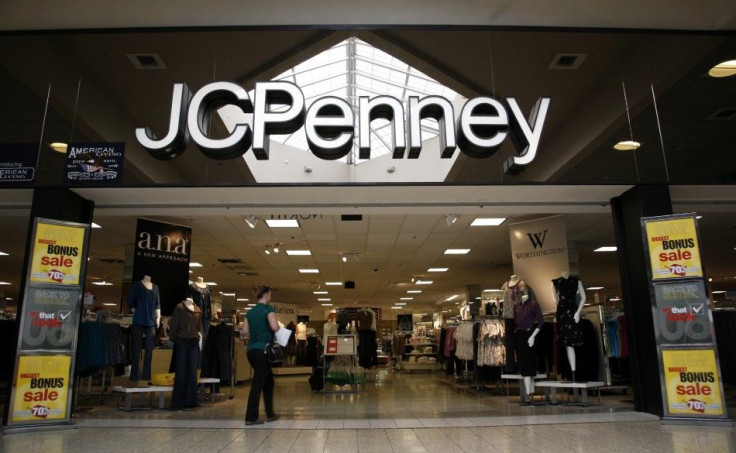JC Penney Revamped: Can Ron Johnson Save Department Stores?

The latest ad campaign of JC Penney (NYSE:JCP), launched Wednesday, caricatures the coupons and the myriad sales and circulars cascading out of a mailboxes that marked the 110-year-old company's former strategy -- and, the retailer's new chiefs believe, cost the company market share in recent years.
Ron Johnson, JC Penney's new CEO is convinced that the coupon-hounding, sale-chasing era -- when department stores such as Sears, Macy's and Penney's reigned -- is history.
With retailing now dominated by bargain sellers like Walmart and Target, Johnson is reinventing JC Penney in a campaign that features brand mixing, a new, simpler and more predictable pricing structure and a more buoyant ambiance.
Retail experts are optimistic about the makeover's impact on JC Penney's bottom line. Consumers will experience the first wave of Penney's rejuvenation on Wednesday. For investors, the verdict remains uncertain.
Johnson, who took the reins of the Plano, Texas-based company in November after running Apple's retail operation, outlined his plan last week in a public presentation. He moved continually, striding Steve Jobs-like, back and forth across a stage for 90 minutes; the presentation even had Jobs-ian title: In Praise of Fresh Air.
The lynchpin of the new plan is Fair and Square Every Day pricing. Gone are the weekly circulars, coupons and sales racks. Shoppers will have three pricing options: Every Day; Month Long Value; and Best Prices.
The change eliminates the casino-like nature of department store shopping, where timing and luck played a role in finding a bargain. Johnson's plan eliminates the guesswork. Door buster sales? No more. Even the cents figure at the end of price tags will be replaced by a double zero. Johnson feels consumers will be happy to leave behind the 590 sales JC Penney had last year, and jump at the chance to find steady deals every day.
The stores will also feature a Town Square, offering complimentary services and freebies like hot dogs and ice cream. Finally, the endless maze of racks will be supplanted by pseudo-boutiques, creating stores within a store.
The changes will take three years to fully implement across JC Penney's 1,104 stores nationwide. In the meantime, the company has maintained a sunny outlook towards 2012. Johnson anticipates spending to reach $800 million, coupled with $900 million in cost cuts in the next two years to cut expenses to less than 30 percent of sales. That puts the company on a path towards $2.16 in earnings per share, beating analyst predictions by 30 percent.
Investors greeted Johnson's announcement Jan. 26 by sending shares up 16 percent to $39.72. But Wall Street analysts remain cautious, reflective of the uncharted waters the company is about to sail.
Lorraine Hutchinson, an analyst for Bank of America Merrill Lynch, said in a client note, We maintain our Underperform rating until we have better clarity on how customers react to the new JC Penney. Still, she raised her EPS estimate for fiscal 2012 to $1.52.
The first measure of the new business model will come in May, when the company reports first-quarter earnings. JC Penney has dropped the practice of releasing monthly sales figures.
Any true stab at predicting the company's trajectory remains a guess at best, according to Michelle Clark, an analyst for Morgan Stanley.
Downside risk to the stock price is pushed out a couple of months until investors can assess the effectiveness of new strategies put in place, she said in a note to clients.
But retail gurus see promise in the new JC Penney. To hear retail consultant and author of The New Rules of Retail Robin Lewis tell it, Johnson stabbed a veritable stick of dynamite into the department store model, lit the fuse and didn't look back.
More than a step to either the higher or lower end of the retail market, Johnson -- who reached Apple by way of Target where he dumped the brand's Cheap Chic image -- is redefining the middle by adding elements from both ends of the spectrum.
The idea is to create a go-to brand that's fun to go to, Lewis said. That is the only thing that's going to drag (consumers) away from the internet. The retailers that continue to see themselves as a building with a bunch of stuff in it will die. All retailers are going to have become experiences.
The new pricing structure, similar to what is known colloquially within the industry as every day low pricing, also acknowledges a new reality: the old model has become grossly inefficient.
The maintenance of supply lines, inventory and manic price changing leads to a logistical headache, said Herb Sorensen, a retail consultant and author of Inside the Mind of the Shopper. Most of the items on sales racks are there for the sake of being there, while the store actually banks on selling a couple of choice items.
They're constrained by the fact that they do not replenish stock on a daily or weekly basis, he said. That means they make bets well in advance of when the sale occurs. There are items that attract customers to the store, and there are the items that actually sell.
The system leads to an inventory glut, hence the bargain sales meant to get unsold items out of the store. The practice, known as high-low, is inherently inefficient.
High-low pricing is attractive to a shopper, but because of its inefficiency it must be more expensive so it's more expensive for the shopper, Sorensen said. When you just have a single-minded focus on operating on the lowest price you can, you rule out any inefficiency in the system. This is the most rational way to retail.
© Copyright IBTimes 2024. All rights reserved.





















